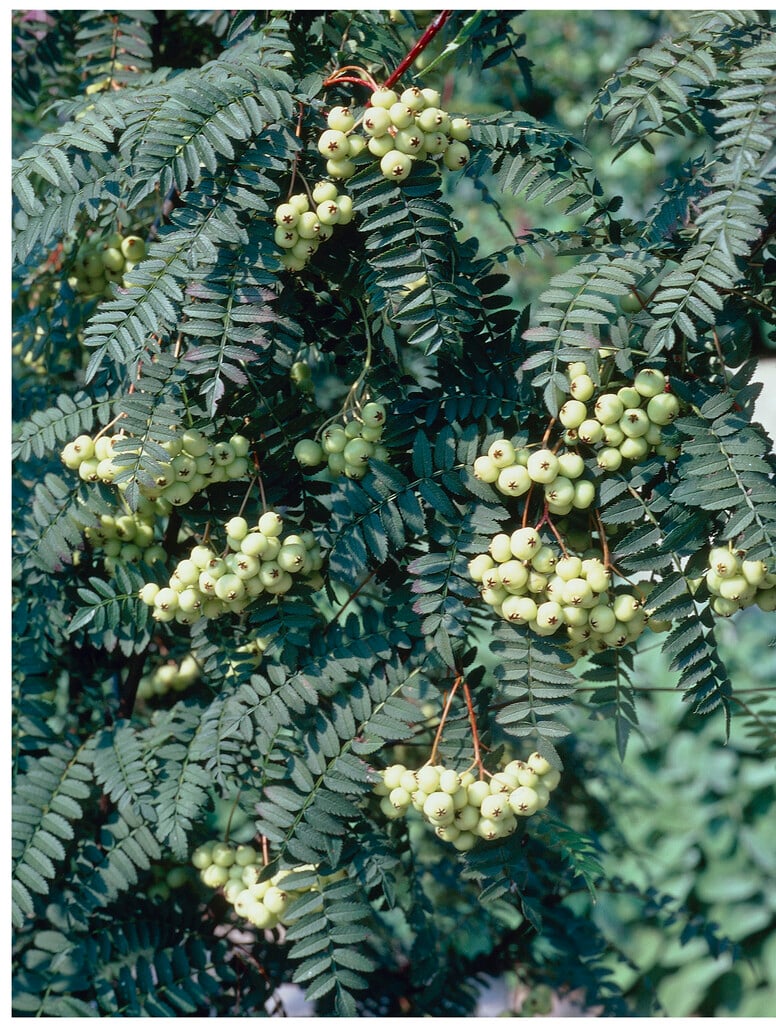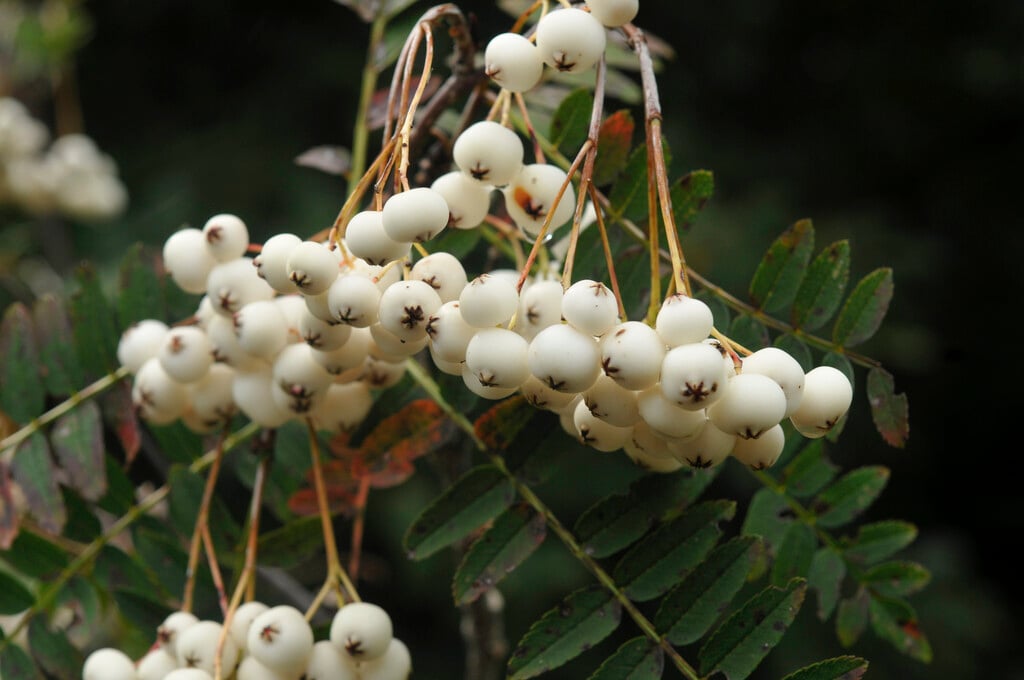Sorbus frutescens
shrubby rowan
One of the smallest white berry rowans, reaching a height of 2m with a similar spread. Dark green compound leaves have an average of 9-13 pairs of leaflets carried on red-orange stems. White flowers appear as a corymb in Spring followed by clusters of white berries in late Summer and Autumn. Striking orange, red and bronze foliage in Autumn creates a bold contrast to the white berries
Size
Ultimate height
1.5–2.5 metresTime to ultimate height
10–20 yearsUltimate spread
1.5–2.5 metresGrowing conditions
Moisture
Well–drained, Moist but well–drainedpH
Acid, NeutralColour & scent
| Stem | Flower | Foliage | Fruit | |
| Spring | White | Green | ||
|---|---|---|---|---|
| Summer | Green | White Pink | ||
| Autumn | Red Orange | Red Orange | White Pink | |
| Winter |
Position
- Full sun
- Partial shade
Aspect
North–facing or East–facing or South–facing or West–facing
Exposure
Exposed or Sheltered Hardiness
H5Botanical details
- Family
- Rosaceae
- Native to GB / Ireland
- No
- Foliage
- Deciduous
- Habit
- Bushy
- Potentially harmful
- Fruit are ornamental, not to be eaten. Wear gloves and other protective equipment when handling. Pets: Fruit are ornamental, not to be eaten - see the HTA guide to potentially harmful plants for further information and useful contact numbers
- Genus
Sorbus can be deciduous trees or shrubs with simple or pinnate leaves and clusters of small white or pink flowers, followed by white, yellow, pink, red or brown berries; some have fine autumn colour
- Name status
Correct
- Plant range
- China, Kansu
How to grow
Cultivation
Grow in moderately fertile, humus rich, slightly acidic soil. Perfect for small gardens and courtyards
Propagation
Suggested planting locations and garden types
- Architectural
- Cottage and informal garden
- City and courtyard gardens
- Low Maintenance
Pruning
Pests
May be susceptible to aphids, scale insects, pear blister mite, red spider mite and sawfly larvae
Diseases
May be susceptible to fireblight, apple canker, silver leaf and honey fungus
Love gardening
Sign up to receive regular gardening tips, inspiration, offers and more
View our Privacy Policy
Get involved
The Royal Horticultural Society is the UK’s leading gardening charity. We aim to enrich everyone’s life through plants, and make the UK a greener and more beautiful place.

